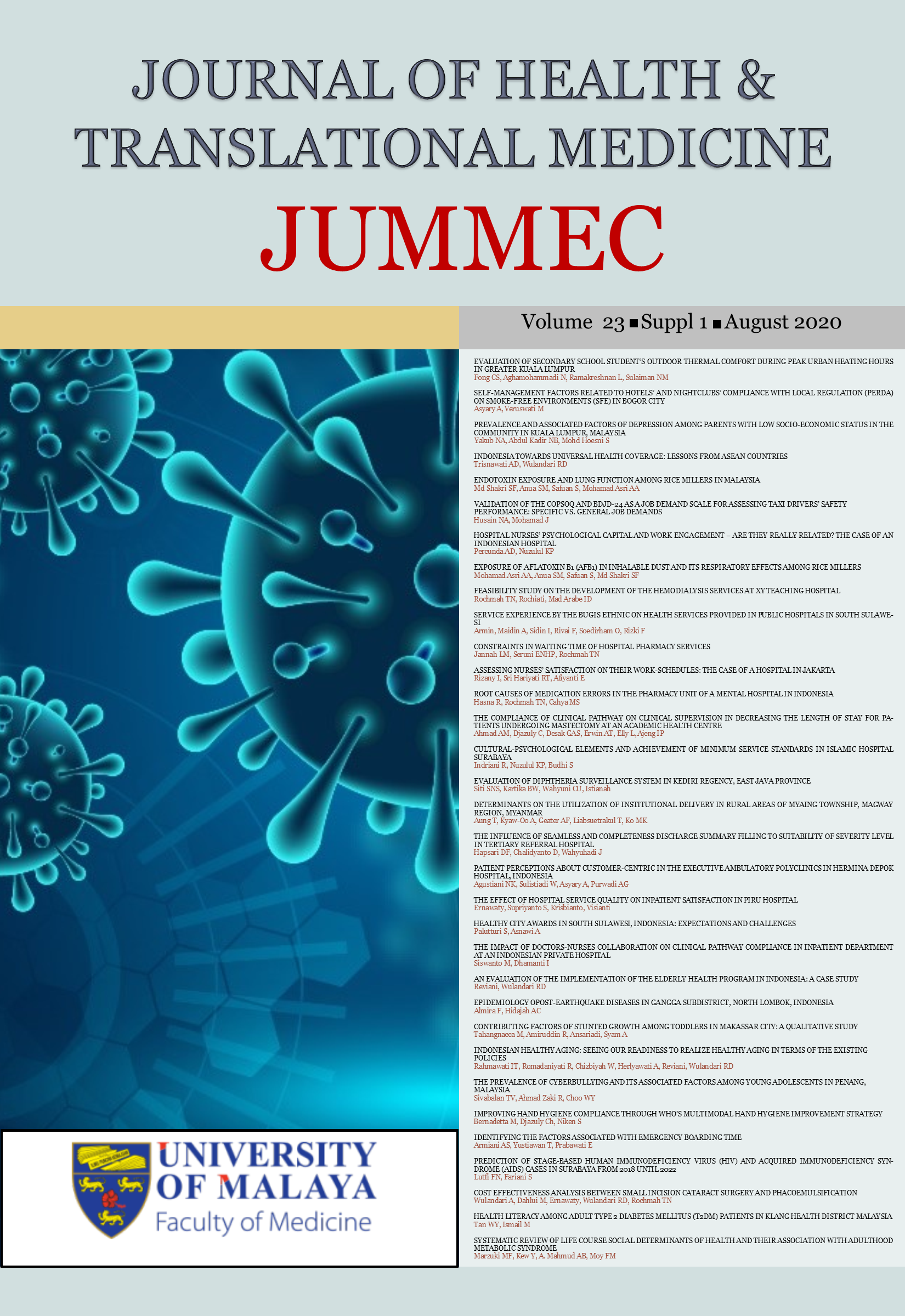PREDICTION OF STAGE-BASED HUMAN IMMUNODEFICIENCY VIRUS (HIV) AND ACQUIRED IMMUNODEFICIENCY SYNDROME (AIDS) CASES IN SURABAYA FROM 2018 UNTIL 2022
Keywords:
HIV, AIDS, Prediction, StageAbstract
Introduction: The development of the presence of HIV and AIDS in the world is increasingly alarming. The number of cases is increasing every year in all regions of Indonesia. Surabaya is one of the cities in East Java which has the highest number of HIV and AIDS cases. Early detection of HIV and AIDS cases will affect the quality of life of people with HIV and AIDS. The purpose of this study was to develop predictive models of HIV and AIDS cases diagnosed at the stages of HIV and AIDS from 2018 until 2022.
Materials and Methods: The present research was a quantitative descriptive study with time series analysis as the research approach. Secondary data was used. The variable was the number of cases at the stages of HIV and AIDS.
Results: The results of this study confirmed that prediction of HIV and AIDS cases found over the next five years always experienced an increase. It increases every year, both at the stages of HIV and AIDS. Based on the results of the prediction, there is a higher number of cases found at the stage of HIV. This indicated that early cases findings in Surabaya were quite good.
Conclusion: The present research reveals the prediction of HIV and AIDS cases in Surabaya has increased over the next five years. They are more commonly found at the stage of HIV, but there are still many cases found at the stage of AIDS.
Downloads
Downloads
Published
Issue
Section
License
All authors agree that the article, if editorially accepted for publication, shall be licensed under the Creative Commons Attribution License 4.0 to allow others to freely access, copy and use research provided the author is correctly attributed, unless otherwise stated. All articles are available online without charge or other barriers to access. However, anyone wishing to reproduce large quantities of an article (250+) should inform the publisher. Any opinion expressed in the articles are those of the authors and do not reflect that of the University of Malaya, 50603 Kuala Lumpur, Malaysia.


